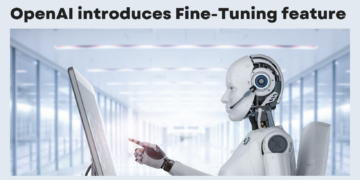Artificial Intelligence (AI) is transforming various aspects of our lives, from customer service chatbots to generating written content. In the realm of academia, AI-generated papers are becoming increasingly prevalent. However, discerning between human and AI-authored content can be challenging. In a breakthrough development, researchers have unveiled an AI detection tool that accurately identifies papers authored by ChatGPT, one of the most advanced AI text generators. This tool could play a pivotal role in helping academic publishers maintain the integrity of human-authored scientific papers.
Tailoring AI Detection for Accuracy
The research team behind this groundbreaking tool, led by chemist Heather Desaire at the University of Kansas, realized that AI detection tools need specialization to improve their accuracy. While a broad detector for AI-generated content is a desirable goal, this project set its sights on crafting a precise tool. By focusing on a specific type of paper, in this case, chemistry papers, the researchers were able to achieve remarkable accuracy in identifying AI-generated content. This discovery hints at a promising path for future AI detectors: customization for specific writing domains.
Features of the Detection Tool
The AI detection tool utilizes machine learning and examines 20 unique features of writing style. These include factors such as sentence length variation, word frequency, and punctuation usage. This comprehensive approach allows the tool to effectively distinguish between text written by an academic scientist and that authored by ChatGPT. The success of this model lies in its ability to achieve high accuracy with just a small set of distinguishing features.
Training the Detector
In their initial study, the research team introduced their ChatGPT detection tool when examining Perspective articles from the journal Science. The researchers developed this tool by training the AI on the introductory sections of papers from ten chemistry journals published by the American Chemical Society (ACS). They specifically chose the introductory section because it is relatively easier for ChatGPT to write, particularly when it has access to background literature.
The training involved using 100 published human-written introductions as a benchmark, and ChatGPT-3.5 was then tasked with crafting 200 introductions in the ACS journal style. Notably, the detector demonstrated a perfect 100% accuracy in identifying ChatGPT-generated introductions based on paper titles. When abstracts were provided instead of titles, the accuracy remained impressively high at 98%. It’s worth noting that this detection tool performed equally well with text produced by ChatGPT-4, the latest version of the chatbot.
In contrast, existing AI detectors like ZeroGPT and one from OpenAI itself demonstrated significantly lower accuracy when trying to identify AI-written introductions. The results showed that these AI detectors struggled to distinguish between human and AI-generated content effectively.
Specialization and Its Limitations
The ChatGPT detection tool excelled in its specialization for scientific journal articles. However, its high accuracy was not replicated when faced with content from university newspapers, failing to distinguish human-generated articles from AI-written ones.
Wider Implications
The use of stylometrics in identifying AI-generated content presents an innovative approach. Instead of solely relying on predictive text patterns, the tool assesses the features of writing style, making it a unique development. However, it is essential to acknowledge that AI detection tools are not a panacea for all issues in academia. Factors such as the pressure on researchers to produce papers rapidly and an evolving perspective on the role of paper writing in the scientific process persist as challenges. AI detection tools should be seen as a valuable addition but not a singular solution to complex social and academic issues.



























